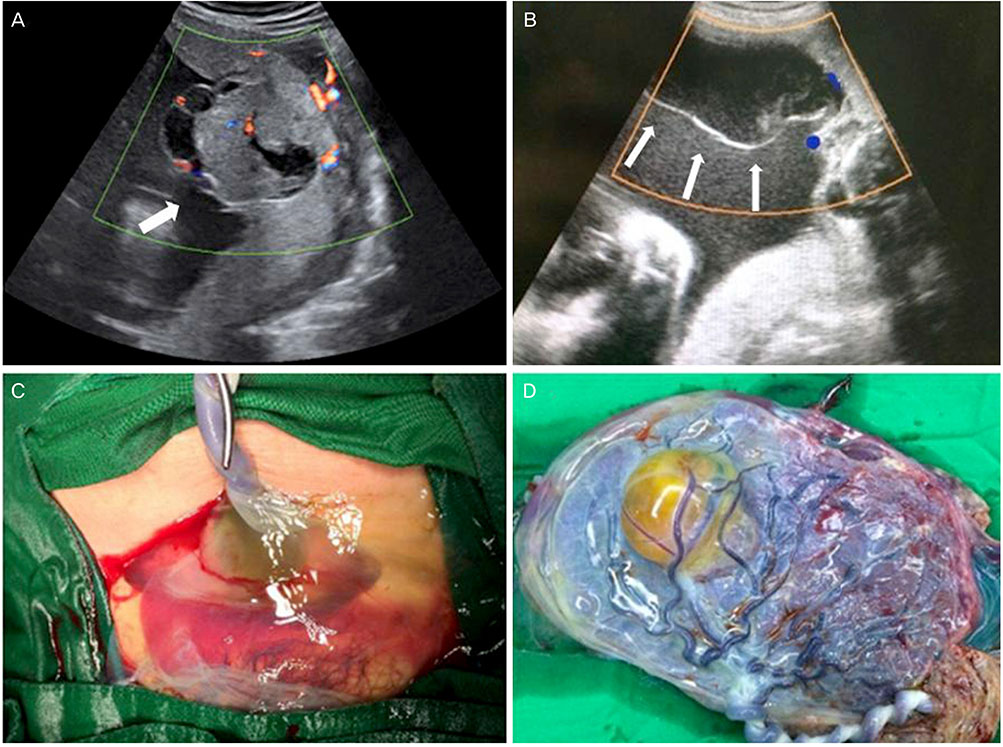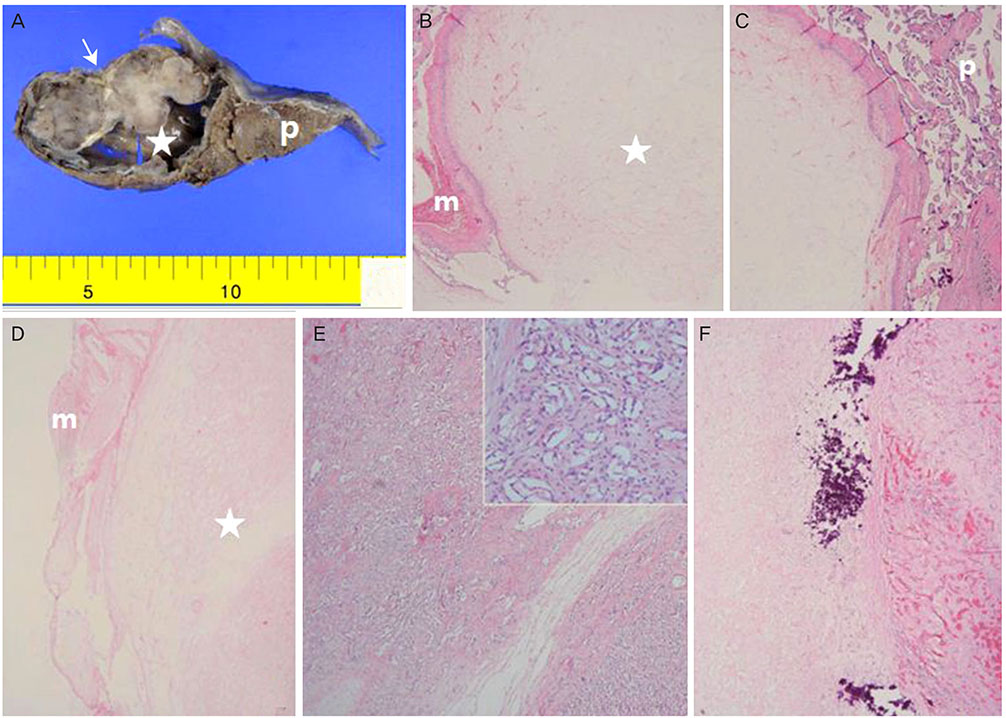Obstet Gynecol Sci.
2016 May;59(3):233-237. 10.5468/ogs.2016.59.3.233.
Chorioamniotic membrane separation caused by the seromucinous collection from a placental chorioangioma
- Affiliations
-
- 1Department of Obstetrics and Gynecology, Busan Paik Hospital, Inje University College of Medicine, Busan, Korea. ob.youngnam@gmail.com
- 2Paik Institute for Clinical Research, Busan Paik Hospital, Inje University College of Medicine, Busan, Korea.
- 3Department of Pathology, Busan Paik Hospital, Inje University College of Medicine, Busan, Korea.
- KMID: 2351790
- DOI: http://doi.org/10.5468/ogs.2016.59.3.233
Abstract
- Placental chorioangioma is a benign non-trophoblastic tumor of the placenta that can have various adverse effects on the mother and fetus depending on its size. Chorioamniotic membrane separation is rare condition of detachment between the amniotic membrane and chorionic membrane. Chorioamniotic membrane separation after the second trimester of pregnancy is usually occurs after invasive procedures or may occur spontaneously; it is mostly associated with fetal abnormalities. Here, we report a case of chorioamniotic membrane separation that might be occurred caused by the seromucinous secretion from a placental chorioangioma.
MeSH Terms
Figure
Reference
-
1. Wou K, Chen MF, Mallozzi A, Brown RN, Shrim A. Pregnancy outcomes and ultrasonographic diagnosis in patients with histologically-proven placental chorioangioma. Placenta. 2011; 32:671–674.2. Sepulveda W, Aviles G, Carstens E, Corral E, Perez N. Prenatal diagnosis of solid placental masses: the value of color flow imaging. Ultrasound Obstet Gynecol. 2000; 16:554–558.3. Sepulveda W, Alcalde JL, Schnapp C, Bravo M. Perinatal outcome after prenatal diagnosis of placental chorioangioma. Obstet Gynecol. 2003; 102(5 Pt 1):1028–1033.4. Quintero RA, Reich H, Romero R, Johnson MP, Goncalves L, Evans MI. In utero endoscopic devascularization of a large chorioangioma. Ultrasound Obstet Gynecol. 1996; 8:48–52.5. Levine D, Callen PW, Pender SG, McArdle CR, Messina L, Shekhar A, et al. Chorioamniotic separation after second-trimester genetic amniocentesis: importance and frequency. Radiology. 1998; 209:175–181.6. Lewi L, Hanssens M, Spitz B, Deprest J. Complete chorioamniotic membrane separation. Case report and review of the literature. Fetal Diagn Ther. 2004; 19:78–82.7. Taori K, Patil P, Attarde V, Singh A, Rangankar V. Chorioangioma of placenta: sonographic features. J Clin Ultrasound. 2008; 36:113–115.8. Amer HZ, Heller DS. Chorangioma and related vascular lesions of the placenta: a review. Fetal Pediatr Pathol. 2010; 29:199–206.9. Abdalla N, Bachanek M, Trojanowski S, Cendrowski K, Sawicki W. Placental tumor (chorioangioma) as a cause of polyhydramnios: a case report. Int J Womens Health. 2014; 6:955–959.10. Kim YN, Jeong DH, Jeong SJ, Sung MS, Kang MS, Kim KT. Complete chorioamniotic membrane separation with fetal restrictive dermopathy in two consecutive pregnancies. Prenat Diagn. 2007; 27:352–355.11. Kaufman AJ, Fleischer AC, Thieme GA, Shah DM, James AE Jr. Separated chorioamnion and elevated chorion: sonographic features and clinical significance. J Ultrasound Med. 1985; 4:119–125.
- Full Text Links
- Actions
-
Cited
- CITED
-
- Close
- Share
- Similar articles
-
- Perinatal Stroke Associated with Placental Chorioangioma: A Rare Case and Review of Literature
- A Case of Placental Chorioangioma Combined with Non-immune Hydrops Fetalis
- Clinical Significance of Large Placental Chorioangioma
- Two cases of complete chorioamniotic membrane separation
- A live birth after spontaneous complete chorioamniotic membrane separation associated with uterine scar



